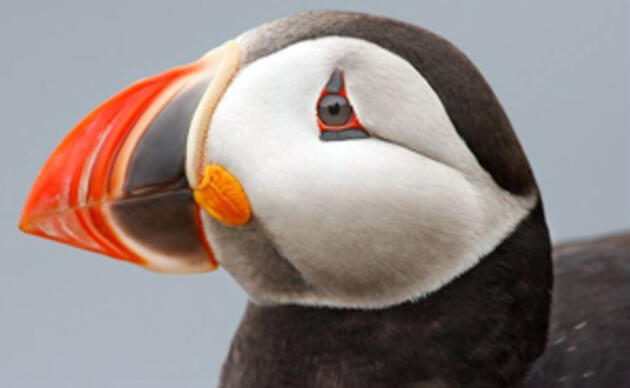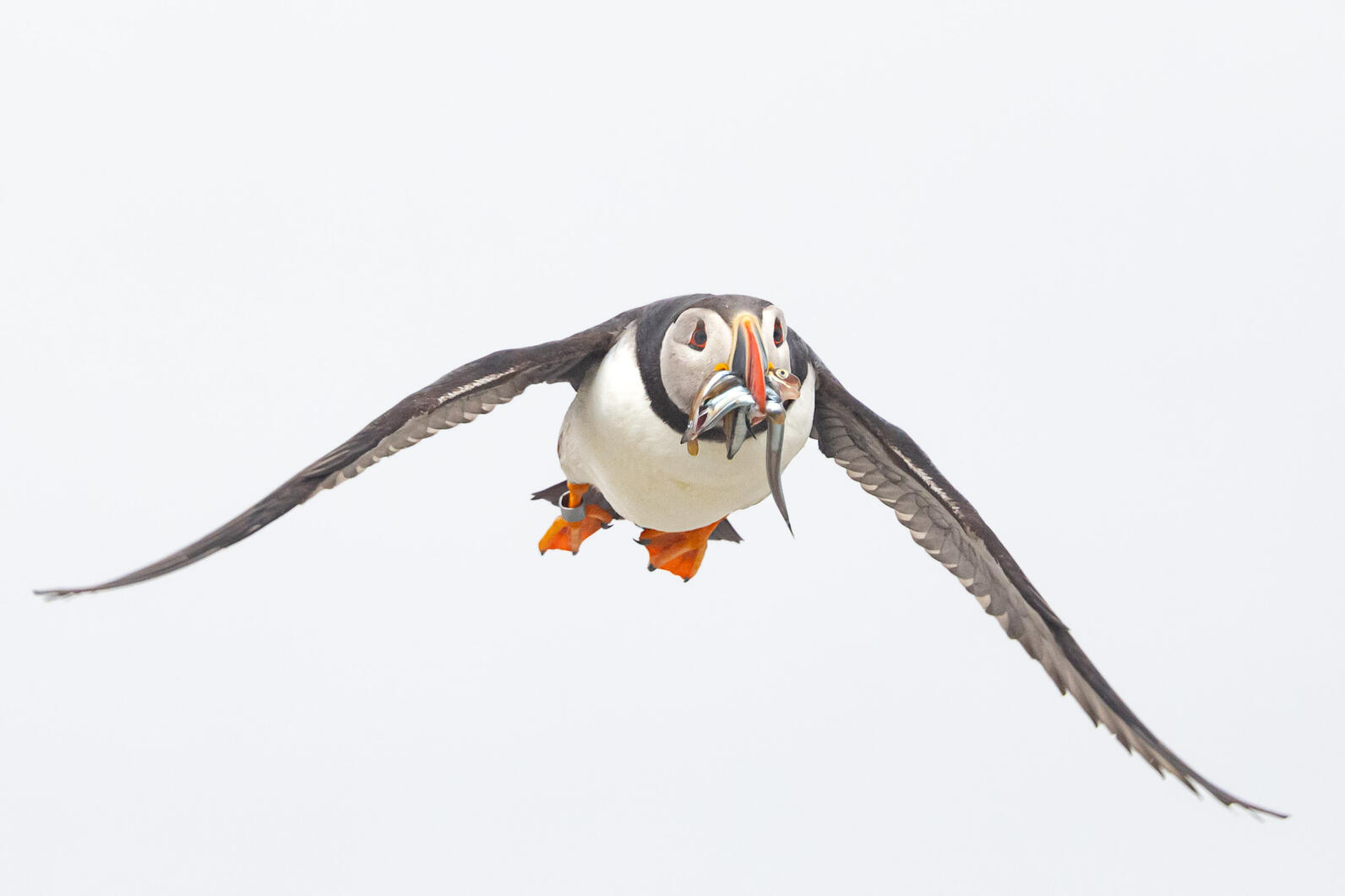
Celebrating the success of Puffin… with Fish!
On July 4, 1981, Evie Weinstein could hardly believe her eyes. An adult puffin had just returned to Eastern Egg Rock with fish in its bill. This was the signal that somewhere beneath the island’s granite boulders, a hungry puffin chick – or “puffling” – had hatched and was waiting for a meal. This meant that Project Puffin was a success! One might say the sight was even more spectacular than a fireworks display. The Seabird Institute has observed “Puffin with Fish Day” every year since.
Just like getting to Carnegie Hall, becoming a Roseate Tern fledgling takes “practice, practice, practice!” Video: Hannah Leabhart
While predatory raptors have paid sporadic visits to the nesting colonies and Stratton Island’s Black-crowned Night Heron heavily predated the island’s Least Tern colony, other news from the Gulf of Maine field stations has been positive. Most islands have reported an abundance of high-quality forage fish. While some tern chicks on Seal Island NWR and Pond Island NWR are struggling to gain weight, many other chunky chicks are practicing their hops, flapping their wings, and transitioning to fledglings thanks to a healthy diet. One Matinicus Rock productivity stint even yielded a puffling that weighed a whopping 330 grams!
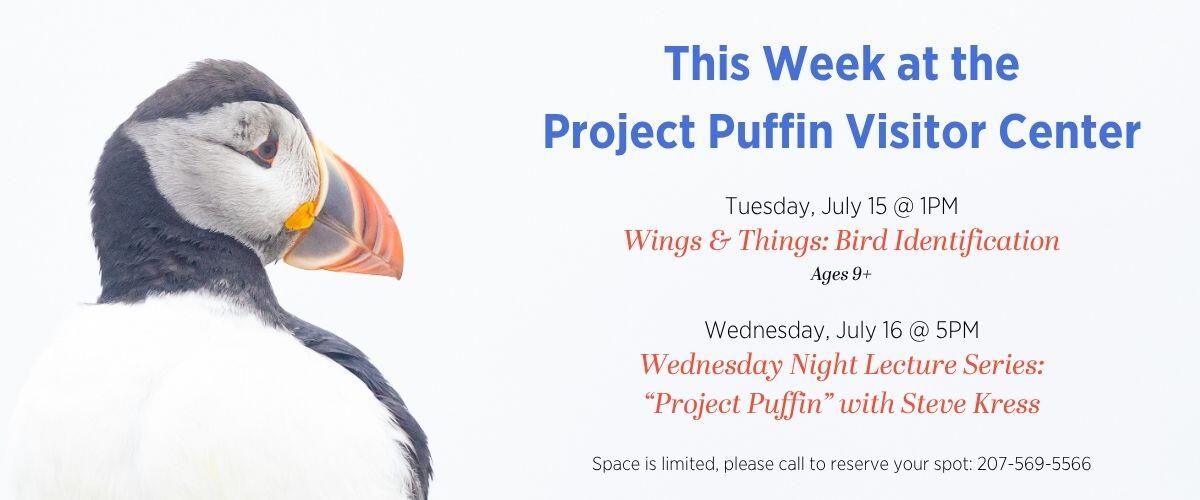
Watching Puffins
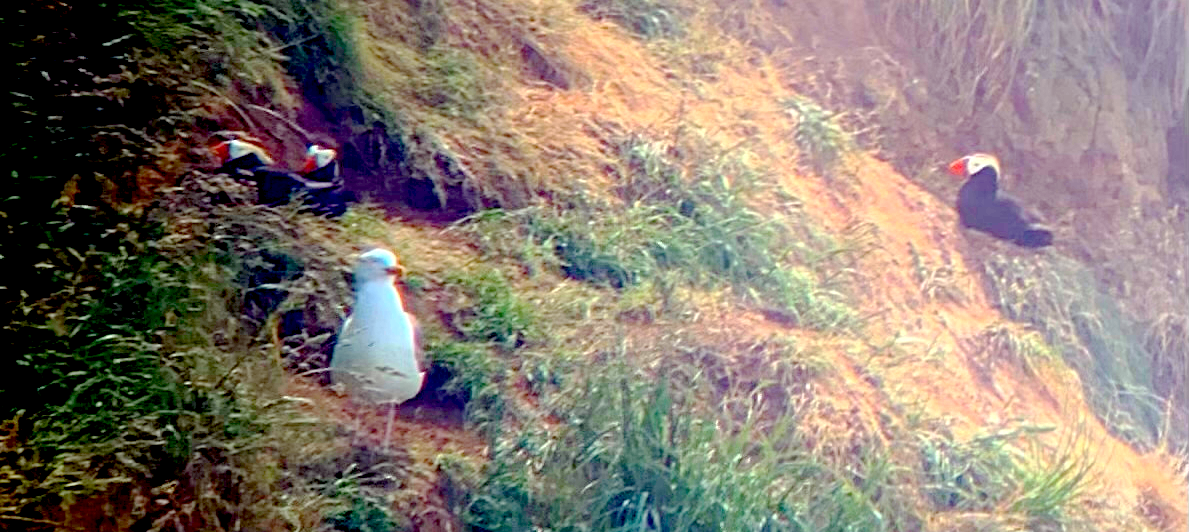
For 14 years, one dedicated volunteer – Tim Halloran – faithfully monitored the Tufted Puffin population on Haystack Rock in Cannon Beach, Oregon. The 235’ sea stack is connected to shore at low tides, making it the largest onshore population of Tufted Puffins in the continental US and an ideal spot for volunteers to collect data. When Tim stepped back from this role at the end of the last season, the Seabird Institute, U.S. Fish and Wildlife Service (USFWS), and Oregon Department of Fish and Wildlife worked together to ensure that the monitoring continued.
Now, as the sun rises in the morning and sets over the Pacific Ocean in the evenings, you will find one of the newly trained volunteers down at the beach for a 2-hour shift – frequently looking through a scope and binoculars and tapping on a tablet to record instantaneous counts, burrow activity, and disturbances to the colony (e.g., when bald eagles come to visit).
Volunteers also often act as ambassadors for the puffin – letting visitors look through the scope while it is trained on a puffin, sharing the differences between murres and puffins, and – more often than you may think - diplomatically informing tourists that they definitely did not just see a penguin. At the end of each shift, data is uploaded to a USFWS database, and the equipment is returned to Hallmark Resort & Spa – a local business which generously provides storage space during the monitoring season. The continuation of the data collection at Haystack Rock is important to help us better understand Tufted Puffin population trends along the Oregon coast as we work to find solutions that will help stop their decline.
Experiencing the Wonder of Hog Island
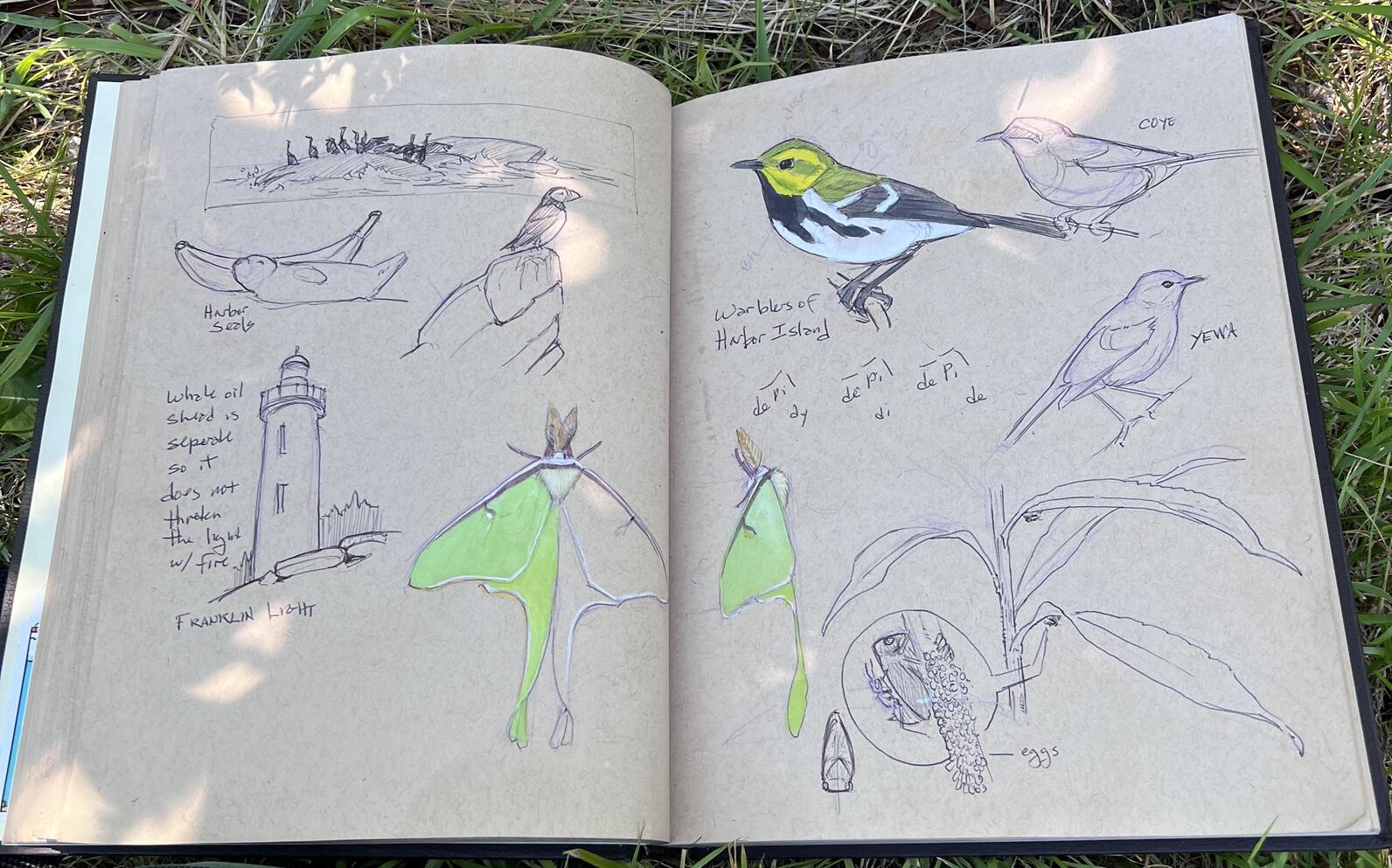
Programming at Hog Island Audubon Camp has been bustling! The island recently hosted campers participating in the Wild Wonder Hog Island Nature Journal Retreat. For many participants, it was their first experience on the island. Their days were filled with exploration and LOTS of journaling. Journaling is an excellent way to connect with nature, cement recent learning, and harness creative expression.

A small but mighty group of teens explored Maine habitats from Borestone Mountain to Hog Island, embarking on a week of birding, observation, and nature journaling. During Mountains to Sea Birding for Teens, campers summited Borestone Mountain on a beautiful day while enjoying Blackburnian Warblers, Black-throated Blue Warblers, and turkey vultures circling below. The evening offered the treat of a chorus of spring peepers and tree frogs! After a mid-week shift to Hog Island, campers enjoyed a field trip to Eastern Egg Rock, where they marveled at the colony that grew from that initial Puffin… with Fish!













